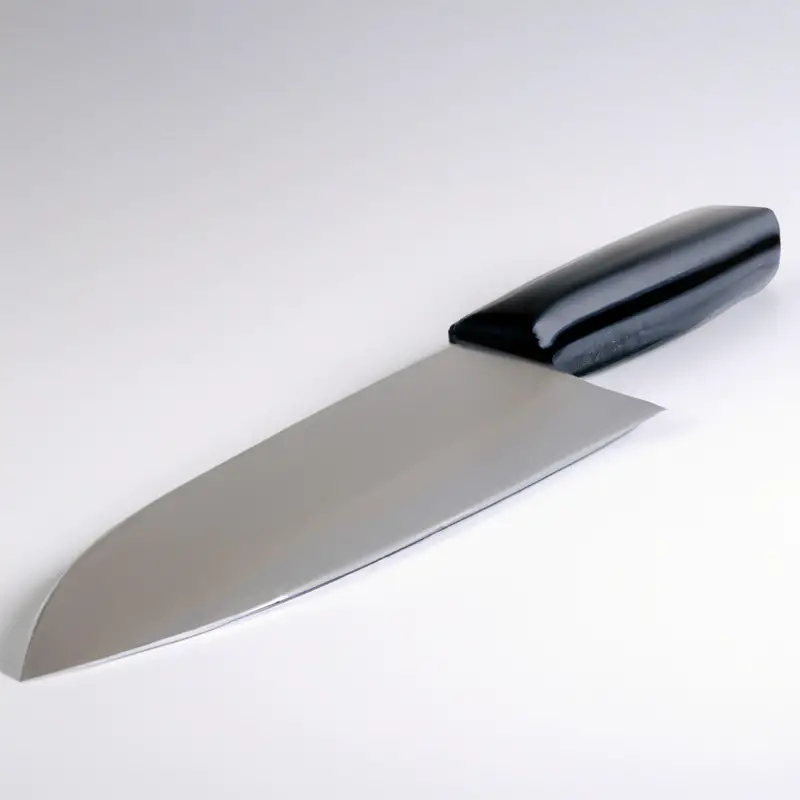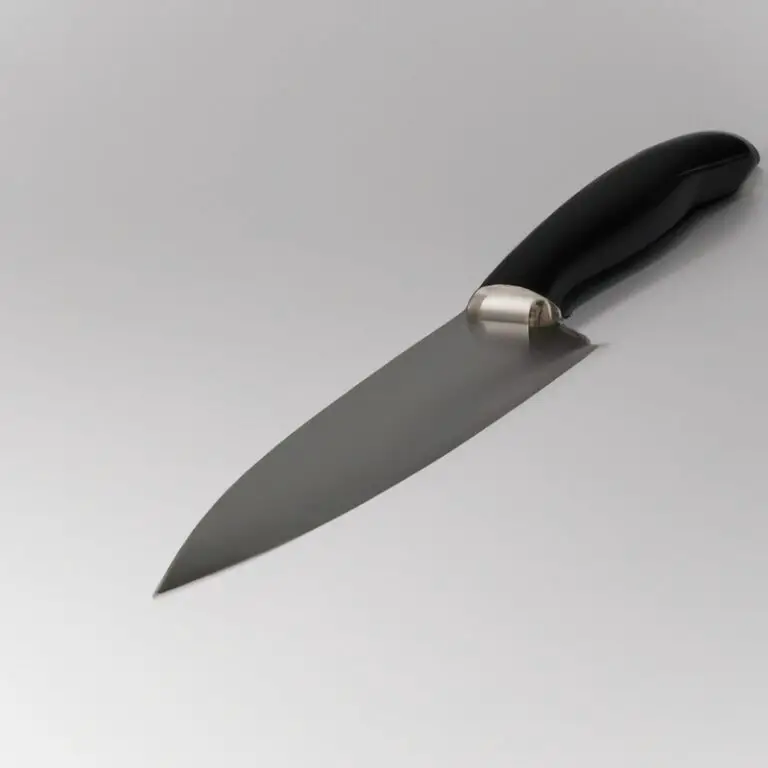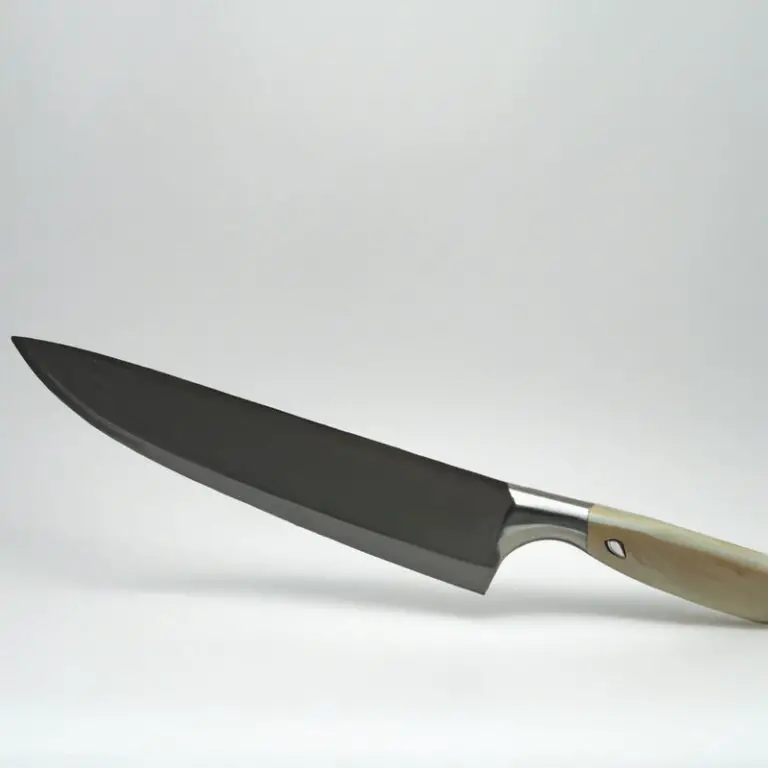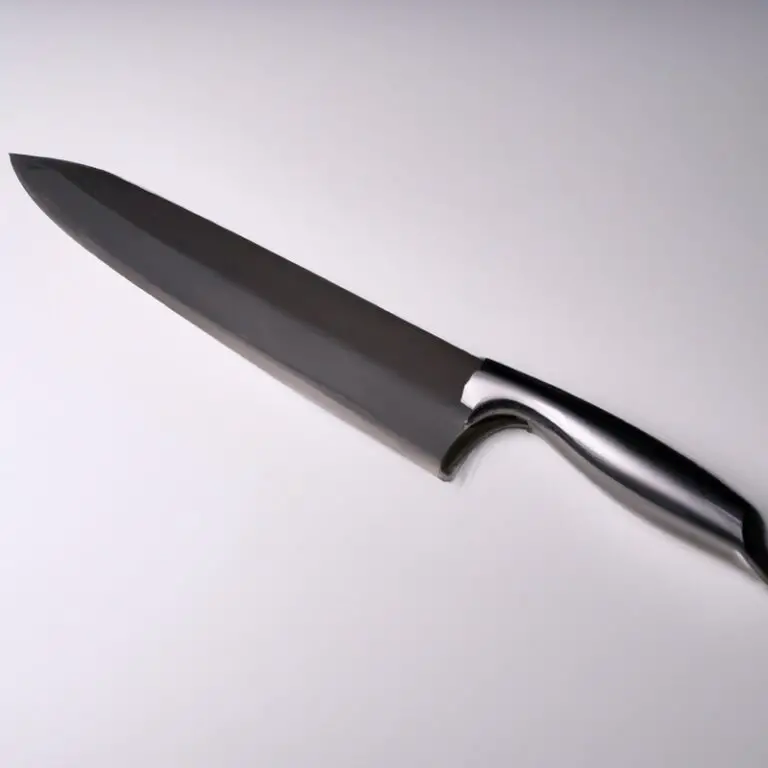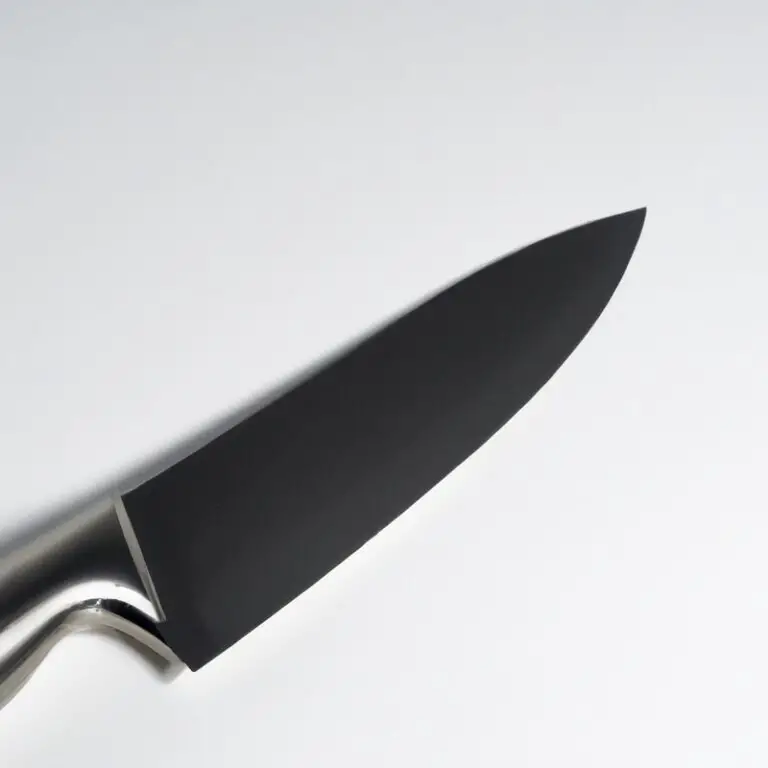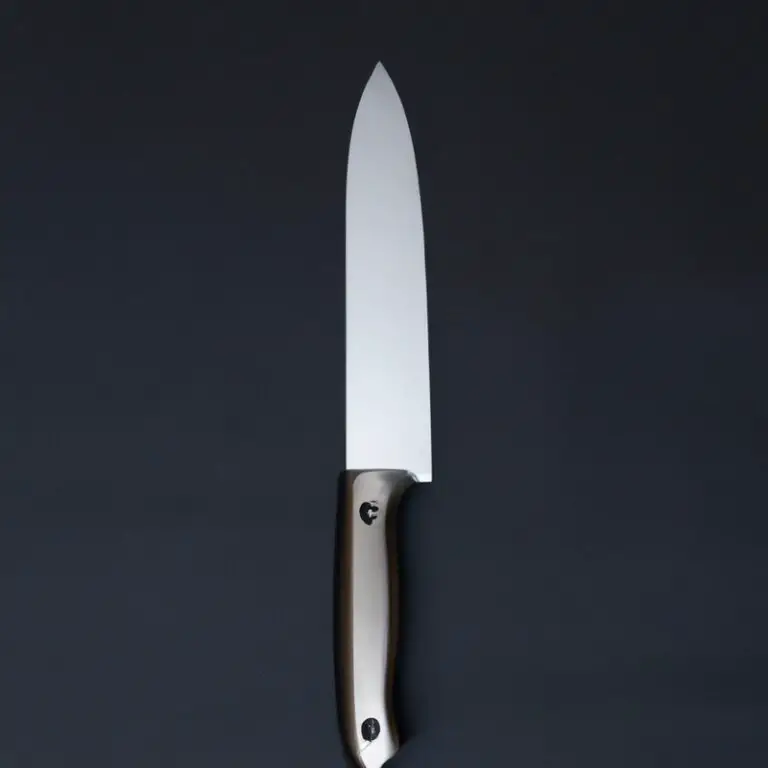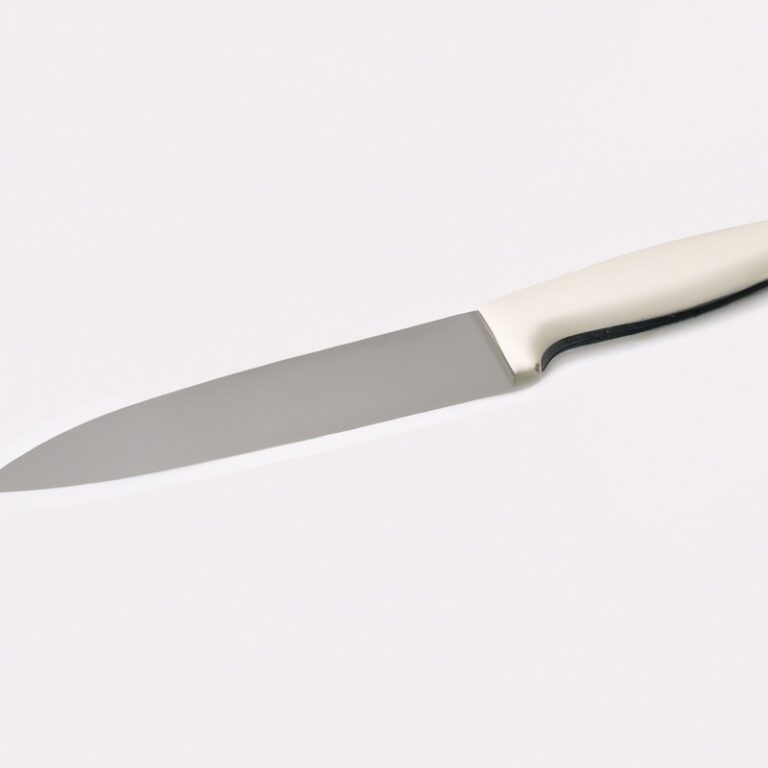How To Choose a Chef Knife?
Key Takeaways:
- Consider the type of blade and its intended use before buying a chef knife to ensure it complements your cooking style.
- Look for a knife with a comfortable and sturdy handle for optimum control and a safer cutting experience.
- Invest in a high-quality chef knife made of durable materials to ensure longevity and value for money.
- Take time to research and test different types of chef knives before making a purchase, as it is a crucial tool in every kitchen.
Are you tired of struggling with dull and inadequate knives in the kitchen? It’s time to invest in a high-quality chef knife that will make your cooking experience effortless and enjoyable.
But with so many options on the market, it can be overwhelming to choose the right one.
Don’t worry, we’ve got you covered! In this guide, we’ll cover everything you need to know to make an informed decision when selecting a chef knife, from understanding its anatomy to the various blade materials, handle materials, and edge options. Let’s get started!
| Factors to Consider | Potential Choices |
| Blade Material | Stainless steel, high-carbon steel, ceramic |
| Blade Length | 6-10 inches |
| Blade Shape | German, Japanese/Santoku, French |
| Tang | Full, partial, or no tang |
| Handle Material | Wood, plastic, composite |
| Weight and Balance | Depends on personal preference and intended use |
| Price | Quality chef knives range from $50-300+ |
Understanding the anatomy of a chef knife: A guide to the parts of a chef knife and their function
To choose the right chef knife, you need to understand its anatomy and the roles each part plays in achieving perfect cuts and making your cooking experience effortless. Here are the parts of a chef knife and their functions:
- Blade – The blade is the main cutting component of a chef knife. It is usually made of high-carbon stainless steel that offers both durability and sharpness to make food preparation easier.
- Point – Located at the tip of the blade, the point is used for detailed cutting like trimming and peeling.
- Edge – The edge is the sharp, thin part of the blade that does the cutting. Its sharpness determines how efficiently the knife can make the cuts.
- Heel – The heel is the widest part of the blade, closest to the handle. It is used for tasks that require more force like chopping and slicing tougher foods.
- Spine – The spine is the dull, thick opposite side of the blade that provides balance to the knife and protects your fingers.
- Bolster – The bolster is the thick portion of metal between the blade and handle. It provides balance, support, and acts as a finger guard.
- Tang – The tang is the extended portion of the metal that runs from the blade through the handle. It increases the stability and strength of the knife.
- Handle – The handle is the part where you hold the knife. It can be made of various materials like wood, plastic, or stainless steel, and it should be comfortable to grip and easy to maintain.
Understanding the anatomy of a chef knife is crucial in choosing the right one for your specific needs and preferences.
Types of blade materials for chef knives: Which materials are best for a sharp and durable blade?
The blade material is a crucial factor in determining the sharpness and durability of a chef knife. Here are some common types of blade materials used in chef knives:
- Stainless Steel: This material is popular as it is resistant to rust and stains. It is also fairly easy to sharpen and maintain.
- High Carbon Steel: This material is known for its sharp edge retention but is susceptible to rust and staining. It requires more maintenance than stainless steel.
- Damascus Steel: This material is a combination of different metals and has a distinctive look. It is durable and holds an edge well.
- Ceramic: Ceramic blades are lightweight, sharp, and easy to maintain. However, they are also brittle and prone to chipping.
Ultimately, the choice of blade material depends on personal preference and the intended use of the knife. For a beginner, stainless steel is a good option as it is easy to maintain, while experienced chefs may prefer high carbon steel for its sharpness retention.
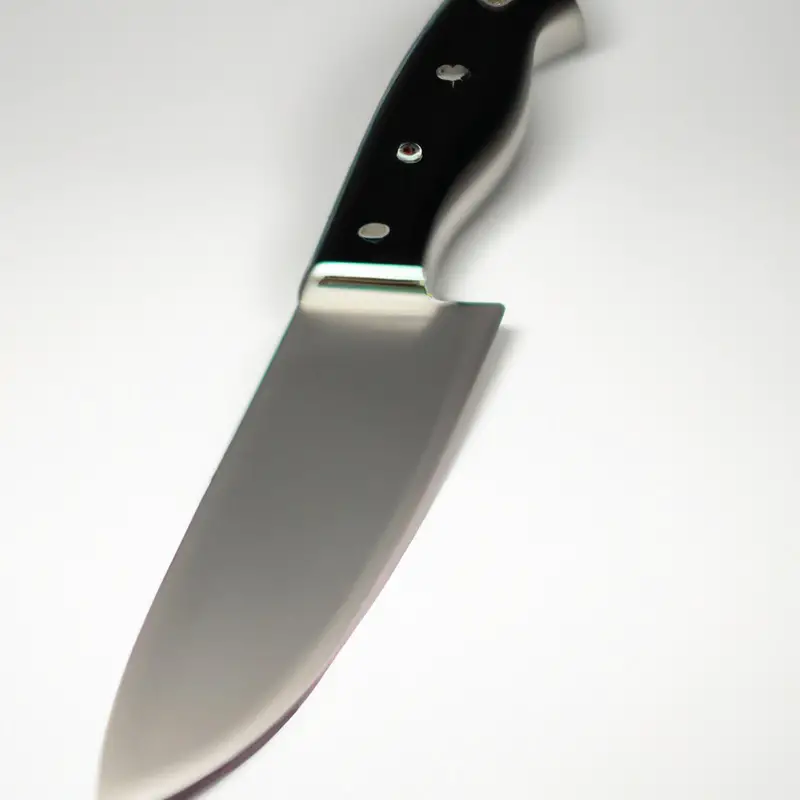
Different types of chef knives: Understanding the variations of chef knives and their ideal uses
Chef knives come in several variations designed for different purposes. Understanding these variations can help you make the right decision when choosing a chef knife.
- Santoku Knife: This Japanese-styled knife has a straighter edge than a traditional chef’s knife and is best for slicing vegetables, fish and boneless meats.
- Gyuto Knife: This traditional Japanese-style chef knife is versatile, with a curved edge and a pointed tip, ideal for chopping, slicing and dicing.
- Bread Knife: This knife has a serrated edge that is perfect for cutting through bread without crushing it.
- Paring Knife: With a short blade that tapers to a point, this knife is ideal for precision tasks such as peeling, trimming, and slicing small items like garlic or strawberries.
- Boning Knife: This knife’s narrow, flexible blade is ideal for removing bones from meat, poultry, or fish.
- Cleaver Knife: A thick, heavy knife with a large rectangular blade used for chopping through bones and dense vegetables.
Choosing the right chef knife depends on what you plan to use it for. Consider your needs carefully and make sure to choose a knife that suits your specific needs.
Factors to consider when choosing a chef knife: Blade size, weight, balance, and handle material
When choosing a chef knife, there are four main factors to consider: blade size, weight, balance, and handle material. Blade size: The blade size you choose will depend on your personal preferences and the tasks you perform in the kitchen.
A typical chef knife ranges from 6 to 14 inches in length.
A smaller blade is ideal for tasks that require precision, while a larger blade is better for tougher tasks. Weight: The weight of a chef knife is also a matter of personal preference.
A heavier knife can provide more force and leverage, while a lighter knife is easier to handle and maneuver.
Consider how you plan to use your knife and choose a weight that feels comfortable to you. Balance: A well-balanced knife will provide better control and reduce strain on your wrist.
Look for a chef knife that balances evenly between the handle and blade.
You can also test the balance by holding the knife at the handle and seeing if it feels comfortable and stable. Handle material: The handle of a chef knife plays a crucial role in your comfort and grip.
Common materials include wood, plastic, and metal.
Look for a handle that feels comfortable in your hand and provides a good grip, even when wet. Overall, consider your personal preferences and needs when choosing a chef knife.
A quality knife can last for years, so investing in the right one is important.
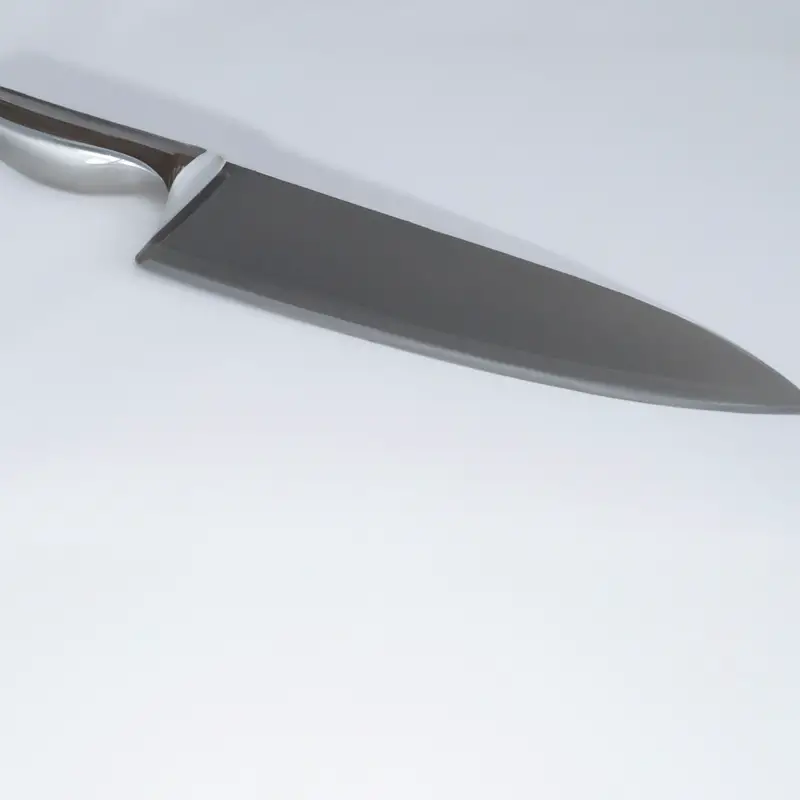
How to choose the right size and weight of a chef knife: Understanding how the size and weight of the blade play a role in the kitchen
Choosing the right size and weight of a chef knife is crucial for your daily cooking tasks. The size of the blade is determined by its length, which usually ranges between 6-14 inches.
A general rule is that the larger the blade, the heavier it will be.
The weight of the knife can affect the comfort and control you have while using it, especially during repetitive cutting tasks. Heavier knives are ideal for tasks such as chopping, while lighter knives are better suited for tasks such as slicing.
The weight of the knife can also affect the balance, with some chefs preferring a knife with a heavier back end or a heavier blade tip for more precise cutting.
It’s important to consider your personal preferences and the types of food you will be using the knife for when deciding on the size and weight. If you’re unsure, it’s recommended to try out different sizes and weights in-store or borrow from a friend to find what feels comfortable for you.
Ultimately, the right size and weight of a chef knife is personal preference and finding a balance between comfort and functionality.
Handle materials: Which type of handle material offers the best grip, durability, and comfort?
The handle material of a chef knife plays a vital role in determining its quality, grip, and durability. There are various materials such as wood, plastic, metal, and composite.
Wooden handles offer a comfortable grip due to their natural texture, but they tend to absorb moisture and can be challenging to clean.
Plastic handles are lightweight and dishwasher safe, but they may not be as durable as other options. Metal handles are durable, but they can become slippery when wet and uncomfortable to hold for extended periods.
Lastly, composite handles are a combination of different materials, offering the best of both worlds.
They are durable, antimicrobial, and have a non-slip grip. Ultimately, the best handle material for a chef knife depends on personal preference and intended usage.
It is recommended to choose a handle material that is comfortable to hold, easy to clean, and offers a secure grip, even when wet.
Blade edge options: Straight edge, serrated edge or hollow edge – which one best serves your cooking needs?
There are three main types of blade edge options for chef knives: straight edge, serrated edge, and hollow edge. Each one serves a different purpose in the kitchen.
A straight edge is best for precise cutting tasks such as chopping, dicing, and slicing.
It offers a clean, sharp cut and is easy to sharpen. A serrated edge is ideal for slicing through tough or crusty surfaces, like bread or tomatoes.
The saw-like teeth of a serrated edge grip and tear through the food, making it easier to cut.
A hollow edge, also known as a granton edge, has small divots on the blade that create air pockets between the food and the blade, reducing friction and preventing slices from sticking together. A hollow edge is useful for slicing through meats or other proteins.
When considering which blade edge option is best for your cooking needs, it depends on the type of ingredients you work with most often.
Straight edges are versatile and can be used for a variety of tasks, while serrated edges are best for specific cutting tasks. Hollow edges are best for proteins and moist ingredients.
Ultimately, it’s best to have a chef knife with a straight edge as your primary blade.
You can always supplement your collection with a serrated or hollow edge knife for specific tasks.
Single vs. double bevel: Determining which type of edge aligns with your cutting technique
When choosing a chef knife, you will encounter two types of blade edges: single and double bevels. A single bevel has one side sharpened at a steeper angle than the other, while a double bevel has both sides sharpened at equal angles.
Single bevel knives excel at precision cutting and are commonly used in Japanese cuisine.
They have a unique design that results in an incredibly sharp edge, which gives them excellent control and maneuverability when slicing. However, they require a more advanced technique and are typically more expensive.
Double bevel knives are more versatile and are commonly used in Western cuisine.
They are easier to sharpen and maintain and provide a more consistent cutting experience. Unlike single bevel knives, double bevel knives don’t require left or right-handed versions and therefore, are more versatile.
Determining which type of edge best suits your cutting needs will depend on your skill level and the type of cuisine you plan to cook.
Single bevel knives are better suited to precise work such as intricate vegetable cuts, whereas double bevel knives are great for everyday cutting needs such as meats and vegetables. Consider your needs, technique, and desired cutting styles when determining which type of edge aligns with your cutting technique.
Single bevels may be ideal for precise work, while double bevels are versatile and easier to use.
How to maintain and sharpen your chef knife: Essential tips for maintaining the longevity and sharpness of your chef knife
To maintain the longevity and sharpness of your chef knife, it’s important to follow these essential tips:
- Clean and dry your knife after each use.
- Use a honing rod to straighten the blade’s edge regularly.
- Sharpen the blade with a whetstone or send it to a professional for sharpening when needed.
- Avoid using abrasive surfaces, such as glass or ceramic plates, when cutting.
- Store your knife in a knife block or sheath to protect the blade and prevent dulling.
By following these tips, you can ensure that your chef knife remains sharp and durable for years to come.
Investing in a chef knife – what to expect for your budget: An overview of what to expect at various price points
When investing in a chef knife, there are different price points to consider, and each one comes with its own set of features and advantages. For those on a tight budget, knives under $50 are available, but they may not offer the same level of sharpness and durability as higher-priced knives.
Knives in the $100-$200 range often feature high-quality materials and better craftsmanship, while knives over $200 offer top-of-the-line durability and precision.
Ultimately, it comes down to personal preference and budget. It is important to invest in a high-quality chef knife that will last for years with proper care and maintenance.
Final Verdict
Choosing a chef knife can be a daunting task, but armed with the knowledge of the anatomy, materials, size, weight, and edge options, you can make an informed decision. Remember that a good chef knife is an investment in your culinary life and should be treated with care.
Taking the time to maintain and sharpen your knife regularly will extend its life and keep it performing at its best.
Consider your budget and invest wisely in a high-quality chef knife that fits your cutting style and needs. With the right knife in hand, the kitchen becomes a place of creativity, innovation, and passion.
Trust in the information presented and choose a knife that will inspire you to cook with confidence and joy.

